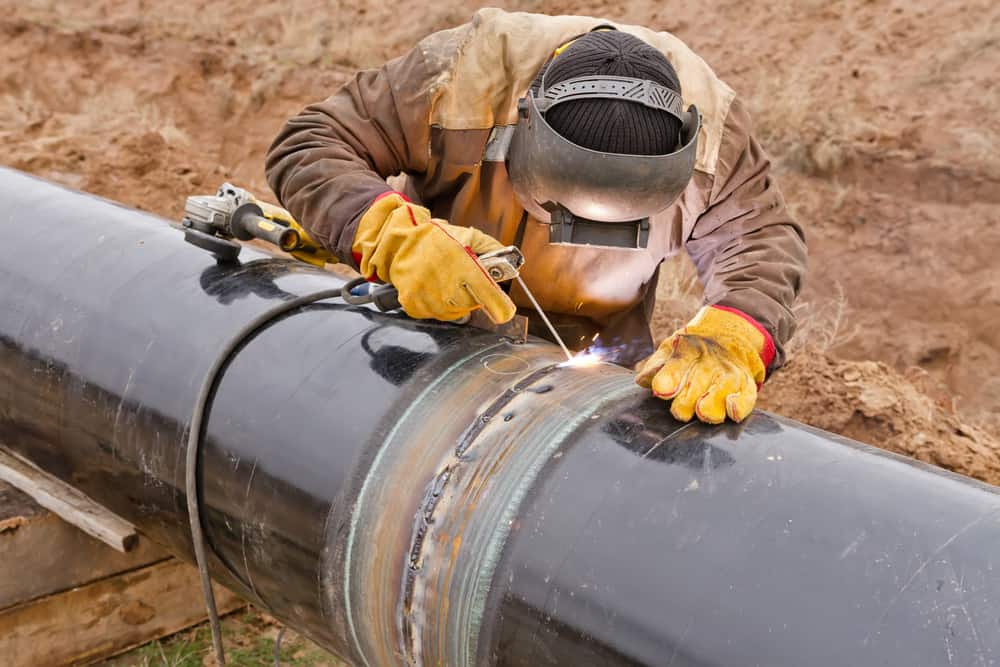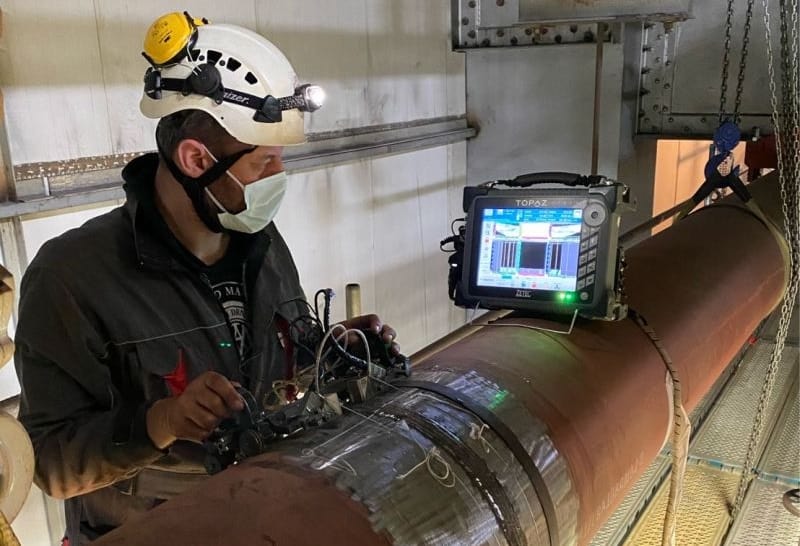Quality Control Ensured: Professional Pipeline Welding Inspection Providers
Quality Control Ensured: Professional Pipeline Welding Inspection Providers
Blog Article
Optimizing Performance: Pipeline Welding Examination Finest Practices
In the world of pipe construction, the honesty and safety and security of welded joints are vital. Guaranteeing that welding examinations are conducted effectively and efficiently can significantly affect the general top quality of the job. By executing best practices for pipe welding evaluation, companies can improve procedures, minimize errors, and improve task timelines. From utilizing sophisticated innovation to developing rigid inspection protocols, there are numerous approaches that can be utilized to maximize performance in this crucial element of pipe building - Pipeline Welding Inspection. The thorough focus to detail needed in welding evaluation holds the vital to the lasting resilience and integrity of the pipes, making it a topic of utmost value in the industry.

Significance of Efficient Welding Examinations
Reliable welding examinations play a crucial duty in ensuring the architectural stability and security of pipes. Proper evaluations are necessary to identify any type of issues, stoppages, or imperfections in the welded joints that might endanger the overall integrity of the pipeline system. By performing thorough assessments, inspectors can spot issues beforehand, avoiding potential leakages, ruptures, or failures that could have major environmental and safety and security consequences.
Timely and exact welding evaluations also aid in preserving conformity with market requirements and guidelines. Sticking to these standards is not just a lawful need but additionally an essential step to guarantee the reliability and longevity of the pipes. Effective examinations can contribute to cost savings by minimizing the demand for pricey repair work or replacements due to welding issues that can have been avoided or remedied throughout the assessment procedure.
Making Use Of Innovation for Evaluations
To boost the efficacy and accuracy of pipe welding examinations, the assimilation of innovative technologies has ended up being increasingly imperative in guaranteeing accurate and complete evaluations of welded joints. Making use of modern technology for evaluations uses numerous advantages, including boosted effectiveness, enhanced precision, and improved safety actions. Among the key technical innovations in pipeline welding assessments is using automated ultrasonic screening (AUT) systems. These systems can scan welds promptly and precisely, offering comprehensive information on potential problems or problems within the weld joint. Additionally, remote aesthetic inspection (RVI) devices such as robotic spiders outfitted with cameras allow examiners to accessibility and assess difficult-to-reach locations without the demand for considerable disassembly or manual intervention. The implementation of digital systems for data analysis and reporting simplifies the inspection process, enabling real-time information interpretation and smooth documents. By accepting these technical remedies, pipe welding assessments can be conducted much more effectively, resulting in better welds, enhanced total security, and lowered job timelines.
Developing Clear Evaluation Methods
Developing clear inspection protocols is important for guaranteeing consistency and dependability in the pipeline welding examination process. These protocols work as a collection of guidelines that outline the specific steps, requirements, and approaches to be complied with throughout inspections. By clearly specifying the assessment methods, all inspectors associated with the process can recognize their duties and responsibilities, bring about a more reliable and standard inspection process.

Normal evaluation and updates to the examination methods are additionally critical to adjust to altering market criteria and needs. By constantly refining and boosting the procedures based on feedback and lessons learned, pipeline welding evaluations can support the greatest quality standards and regulatory conformity.
Training and Qualifications for Examiners

Training and certifications for examiners are extremely important in making sure the competence and proficiency of people entrusted with overseeing pipe welding processes - Pipeline Welding Inspection. Appropriately educated inspectors possess the needed knowledge and skills to properly examine weld top quality, adherence to welding procedures, and conformity with sector requirements and regulations
Accreditations, such as those offered by the American Welding Society (AWS) or the American Petroleum Institute (API), verify an assessor's knowledge and ability to do inspections to the greatest requirements. These certifications typically need strenuous training, assessments, and continuous professional growth to guarantee that assessors stay present with the most up to date improvements in welding technology and inspection methods.
Along with formal certifications, continual training programs play a critical role in enhancing inspectors' abilities. These programs cover a wide variety of subjects, including welding procedures, flaw detection, security procedures, and appropriate codes and criteria (Pipeline Welding Inspection). By buying extensive training and qualifications for examiners, business can promote the integrity of their pipe welding projects and additional hints minimize the risks related to low-grade welds
Constant Improvement in Inspection Processes
Building upon the structure of experienced and licensed inspectors, constant renovation in assessment processes is important for guaranteeing the recurring top quality and conformity of pipe welding procedures. By carrying out a system of continuous renovation, pipeline welding evaluation processes can develop to fulfill the altering needs of the industry, technical improvements, and regulative demands. This includes routinely reviewing and examining assessment visit site procedures, tools, and methods to determine areas for enhancement.
One trick element of continual enhancement in inspection procedures is feedback. Collecting input from inspectors, welders, engineers, and other stakeholders enables an extensive analysis of current methods and the identification of prospective locations for enhancement. In addition, leveraging information and analytics can give valuable understandings into the performance of evaluation procedures, enabling educated decision-making for optimization.
Furthermore, spending in training and growth programs for examiners can ensure that they are furnished with the newest understanding and skills to do their obligations effectively. Continuous renovation is a dynamic process that needs dedication and commitment from all stakeholders to drive quality in pipeline welding examination techniques.
Final Thought
In verdict, making best use of efficiency in pipeline welding assessments is vital for ensuring the top quality and security of infrastructure jobs. By using technology, developing clear procedures, providing correct training and accreditations for examiners, and continually improving examination processes, companies can streamline their procedures and lessen risks. It is critical for markets to focus on efficient welding inspections to preserve high standards and fulfill governing requirements.
Efficient evaluations can add to cost savings by minimizing the need for costly repair services or replacements due to welding problems that might have been stopped or fixed during the inspection process.
Developing clear evaluation methods is essential for guaranteeing uniformity and dependability in the pipe welding inspection process. By plainly defining the inspection methods, all assessors entailed in the process can recognize their functions and duties, leading to a much more efficient and recommended you read standard examination process.
Clear evaluation protocols assist in reducing the likelihood of errors or oversights throughout the examination process.Structure upon the foundation of licensed and trained examiners, continuous enhancement in inspection procedures is crucial for guaranteeing the recurring quality and conformity of pipeline welding procedures.
Report this page